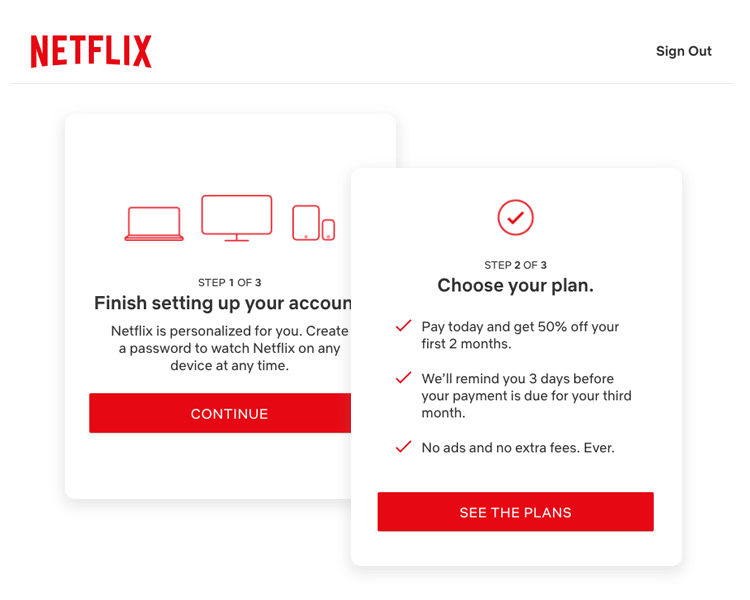One of the key considerations before launching a product is to ensure that you have a strong product-market fit. On the surface, this may seem like a simple concept. However, product-market fit can be a tricky concept and is something you need to constantly revisit at every stage of the development process. You need to make sure you’re staying on track and actually creating a product that solves a problem. Let’s explore the essential steps you need to take for optimal product-market fit.
What is Product-Market Fit?
Let’s start with a clear definition of product-market fit, a commonly-used term that’s defined in many ways. Marc Andreessen is credited with coining the term, says it’s simply “being in a good market with a product that can satisfy that market.” This is a solid definition, but not very specific. Here are some criteria for having a product-market fit.
The Market is Primary
Tren Griffin provides an insightful explanation of why market matters more than anything else. The key takeaway is that no matter how brilliant your product is, what really counts is whether there’s sufficient demand for it. In the tech world, this usually comes down to whether you’re solving a problem. You can, to some extent, educate your market on why they need your product. This, however, is difficult and expensive, especially if you aren’t a large company. It’s generally easier to provide customers with something they already know they want.
Users Need Your Product
Another characteristic of a product that truly fits its market is that users don’t merely like the product, they’d feel disappointed or inconvenienced without it. Sean Ellis of Growth Hackers quantifies this principle by saying that a good product-market fit requires at least 40% of users would be very disappointed if they could no longer use your product.
You Have Product Retention
Retention is a crucial indication of product-market alignment. You don’t want people to simply try your product but to use it consistently. For software products, you want ongoing subscriptions.
The Pirate Metrics Model
The Pirate Metrics model, also known as AARRR, developed by Dave McClure is useful for verifying that you meet all the criteria for product-market fit.
- Acquisition — Acquiring a new potential customer, whether by paid advertising, SEO, blogging, social media, or referrals. They may sign up for your mailing list or call you.
- Activation — The customer or user begins using your product. This can mean starting a free trial, logging into your site, or using your app.
- Retention — They continue to use your product. They upgrade from a free to a paid version or sign up for a subscription.
- Referral — They bring you new users.
- Revenue — They become a paying customer.
Essential Steps for Optimizing Product-Market Fit
Here are the most important actions you need to take if you want to ensure you have product-market fit.
Know Your Customer
The first step is to do adequate market research to make sure you’re targeting the right customers. Create one or more buyer personas helps you identify your customers. You can develop buyer personas using several methods such as polls, surveys, phone interviews, and focus groups. You should pay attention to several things as you collect data.
- Demographics. Segment customers by gender, age, geography, profession, income, and other metrics. You can obtain statistical information on
- Needs and preferences. You can learn about the specific needs and problems of your customers by conducting polls and surveys, asking questions on social media and on your blog.
- Personality traits. When you interview people, you can pick up more subtle qualities about them such as personality traits and how enthusiastic they are about certain questions. This is best for in-person and online video discussions. These qualities are harder to quantify but can provide valuable information about your market. For example, it can be helpful to know if your customers are primarily introverted or extroverted.
Putting together a buyer persona requires you to create a fictional yet relevant example of your typical customer. HubSpot and other companies make buyer persona templates you can use to make the task easier.
Identify Your USP
Your unique selling proposition is what sets you apart from the competition. It serves as the foundation for your marketing as you communicate the benefits of your product to customers. When you’re clear about your USP from the outset, you’re in a good position to align your product with the market. There are several components to this.
Understand What Makes You Different
In order to know how you’re different, you need to study the competition. There are several ways in which you can set yourself apart, such as lower prices, unique branding, faster service, or more/better features.
Communicate Your USP
It’s necessary to be able to convey what makes your business special in simple terms. You need this for your marketing, pitching to investors, and product pages. This isn’t something complex or technical, but a basic statement of the value you offer. A good example is the tagline for Domino’s Pizza: “You get fresh, hot pizza delivered to your door in 30 minutes or less, or it’s free.” This is a single sentence that conveys what it is, high-quality, speed, and a guarantee.
Conduct User Testing
User testing is essential not only before launching a product but also when you’re introducing new features or upgrades. With testing, you can see how easy it is for users to operate features, and you can spot potential problems.
Indicators of Product-Market Fit
How do you know if you’ve achieved sufficient product-market fit? There are some clear indicators that tell you if you’re in a good place or if you need to do more work in this area.
Website Metrics
Website data such as traffic, bounce rate, and conversions are good indicators of healthy product-market alignment. On the other hand, if people are quickly leaving your site without taking action, this is a warning that they aren’t getting what they came for.
Customer Satisfaction
How customers respond to your product provides some of the best evidence of product-market alignment. Of course, this is something you can’t measure until after you launch. However, it’s still vital to track, so you can fine-tune features and policies. This includes customer support issues and your return rate.
Customer reviews provide valuable information as people aren’t shy about sharing positive or negative experiences. They are especially vocal about pointing out if they feel misled, which is a clear indication of a product-market gap. Reading customer reviews for competitors is also worthwhile, both before and after your launch.
Make Product-Market Fit a Priority
While it’s especially important to align a product with the market before launching, it’s also an ongoing concern as your business grows, you change and upgrade products, and your customers’ needs and demands evolve. You need to continually track and test features and products to make sure they’re a good fit for your market.
![]() Give feedback about this article
Give feedback about this article
Were sorry to hear about that, give us a chance to improve.
Error: Contact form not found.




